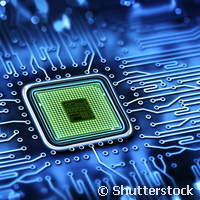Innovative 3D integration technology could improve industrial processes
The latest gadgets hitting the market are smaller and faster than ever before, and rapidly-emerging 3D integration technology plays a major role in this evolution. The process, which consists in stacking 2D dies and connecting them in the 3rd dimension in order to speed up communication between chips, can be found in appliances such as miniaturised implantable medical devices and radio frequency devices found in mobile phones. It stacks and interconnects multiple materials, technologies, and functional components to form highly integrated micro and nanosystems for cross-sector applications. FAB2ASM, an EU-backed project that set out to develop a new manufacturing technology for the 3D integration of microelectronics and Microsystems, has recently come to term and published positive results. The team addressed a major shortfall in technology development time and precision that hinders industrial output by joining traditional robotic tools with the physics of self-alignment - where tiny chips align due to surface tension of liquid or other physical forces acting at the micro-scale level. The main approach starts with component and interface design. In the process, chips fed by high speed robots are accurately aligned to the targets by self-assembly followed by permanent bonding to obtain 3-Dimensional devices. 3D integration is a very promising area of technological development and carries huge economic potential. 'Supporting the development of micro-assembling techniques through this project will allow for keep our industries afloat in a very competitive international environment' said Dr Michael Gauthier, FAB2ASM coordinator. In this context, the consortium aimed to improve the competitiveness of European nano and micro-manufacturing with the use of integration technology which enables innovative products to be produced competitively, while counterbalancing the trend of outsourcing production to low-wage economies. In contrast to most explorative self-assembly technology developed to-date, FAB2ASM not only reuses most industrial processes but also improves the performance of the integration process in terms of precision and efficiency. The technology relies on robotic pick-and-place machines and machine vision, which cannot be simultaneously rapid or accurate. For example, if a micrometer is needed the integration timescale can be very long or in some cases unachievable. The project partners represent a major share of European industry in nano- and micro manufacturing and expect FAB2ASM results to improve its market share in microsystem devices by up to 5%. FAB2ASM completed its work in April this year and consisted of 9 partners from 6 European countries. The project received EUR 4.7 million from the EU as part of an overall strategy to support research that helps to improve industrial manufacturing.For more information, please visit: FAB2ASM http://www.fab2asm.eu/ Project Factsheet



